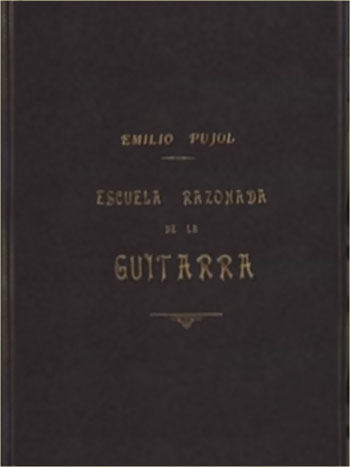Download 1 free sheet music and scores in format PDF: Guitar School Emilio Pujol Pujol, Joan Baptista. Strings By Mail The Best of Emilio Pujol in 26 Pieces for Guitar - Composer: Emilio Pujol Editor: Frederic Zigante Series: Editions Durand Publisher: Editions Max.
The PDF Version We have a of this article with the video embedded in the document so you can save the entire article to your computer, video included! IMPORTANT: The PDF version of this article contains embedded video.
It will not play well unless you save this PDF to your computer first. Then, open the file you just saved and the video will play smoothly. The PDF is 782 MB so it may take a while to download. Note: You must have Adobe Reader 10 or later installed on your computer to play the videos contained in the PDF. Copyright Douglas Niedt.
All Rights Reserved. This article may be reprinted, but please be considerate and give credit to Douglas Niedt. I have always thought the word 'pizzicato', (or 'pits') when applied to the guitar, is somewhat of a misnomer. It comes from the Italian pizzicare, which means to pluck. Torrent mame 32 full version. But we guitarists always pluck the strings of our instrument don't we?

But the meaning for guitarists is that much of the time we use this technique to imitate the pizzicato of the bowed-string family—violins, violas, cellos, basses. Amusingly, in many cases the bowed-string or orchestral string instruments use the pizzicato technique to imitate the lute or guitar. For instance, in Rimsky-Korsakov's Capriccio Espagnol in the Scena e canto gitano, the violins and cellos are instructed to play pizzicato 'quasi guitara'. They actually hold their instruments like a guitar and strum the written three- and four-note chords. So ironically, when guitarists use the pizzicato technique, we are often imitating a bowed-string instrument imitating the guitar.
Technically, on bowed string instruments, the soundpost inhibits the vibration of the instrument top, producing a tone that is somewhat muffled. In effect, the soundpost filters out the high frequencies of the note and produces a quick decay of the pizzicato note.
To imitate this sound, most guitarists filter out the high frequencies and shorten the decay of the note by placing the right side (the side opposite the thumb) of the palm of the hand on the bridge and strings and plucking with the thumb or fingers. La brujula para el ministro evangelico pdf merge word. In fact, in the world of heavy metal guitar it is called 'palm muting' not pizzicato. On the classical guitar, the hand must be placed just right.
If placed too far forward (towards the soundhole), the pitch of the note will be sharpened or it will be so muffled as to not have a pitch at all. If placed too far back, the string will not be damped at all and will ring freely. Watch this video to hear the violin pizzicato.
First, the violinist will play with pizzicato and then without pizzicato. Next, he will play a passage pizzicato and I will play the same passage with pizzicato on the guitar.
If you don't see a video, refresh your browser. Be sure to watch the video on full screen. Click the symbol to the right of 'HD' in the lower right-hand corner after the video begins playing. Hit escape 'ESC' on your keyboard to return to normal viewing. Carlevaro goes on to argue that when the violinist plays pizzicato, all he does is pluck the string and because of the nature of his instrument, the note has a dampened, rather short sonority. Therefore Carlevaro says we guitarists must damp the string after we pluck it to play a true pizzicato. The problem is that even though this technique is useful, it sounds nothing like a violin pizzicato!